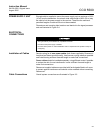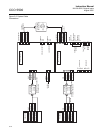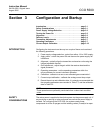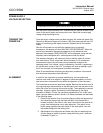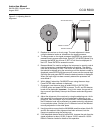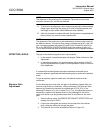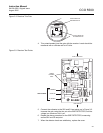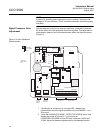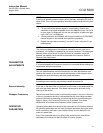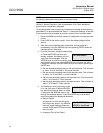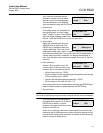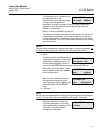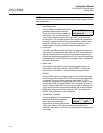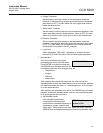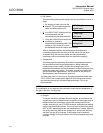
Instruction Manual
IM-106-5500, Original Issue
August 2005
3-7
CCO 5500
NOTE
If the duct is operating and the opacity levels are high, reduce the D2 level to
about 8,500. This is to avoid saturation should the opacity level within the duct
reduce.
3. *To ensure that the detector signal is not saturating, observe the
saturation count signal displayed next to the detector levels. If a SAT #
of more than 0 is displayed, turn the trim pot slightly to reduce the gain
until a SAT # of 0 is displayed.
4. *Should saturation be indicated, with trim pot turned fully CLOCKWISE,
reduce the gain in the receiver and repeat the procedure.
5. Repeat the steps above marked (*) for the D1 level, using the D1 trim
potentiometer.
NOTE
The circuits are designed so that wherever saturation occurs (receiver or
processor), it will always be detected by the micro-processor. If the displayed
detector levels cannot be set to within this band or saturation cannot be
avoided, the detector levels should be optimized at the receiver. Refer to
Receiver Gain Adjustment.
TRANSMITTER
ADJUSTMENTS
NOTE
It is recommended that Rosemount Analytical is consulted before making any
adjustments within the transmitter.
Two trim potentiometers within the transmitter unit allow adjustments to be
made to the intensity of the source and the frequency of the chopper motor.
These are set up at the factory and rarely need adjustment.
NOTE
Increasing source intensity may severely reduce the source life.
Source Intensity A trim pot, in the rear of the unit (furthest from the lens) is accessible after the
end cover has been removed. This allows adjustments to be made to the
intensity of the source.
Chopper Frequency Remove the head from the duct to conduct this process. A trim pot. in the front
of the unit (nearest to the lens) is accessible after the front flange has been
removed (achieved by loosening and removing the four screws holding the
flange in place). Once removed, the trim pot. is revealed. This allows
adjustments to be made to the frequency of the chopper motor.
OPERATING
PARAMETERS
Operating parameters must be set in the instrument for it to function correctly.
All operating parameters are set within the signal processor during the setup
mode, where they are held in non-volatile memory and so retained in the
event of a power loss.
Even if the measured data is not going to be normalized the normalizing
parameters must be set for the instrument to function properly.



